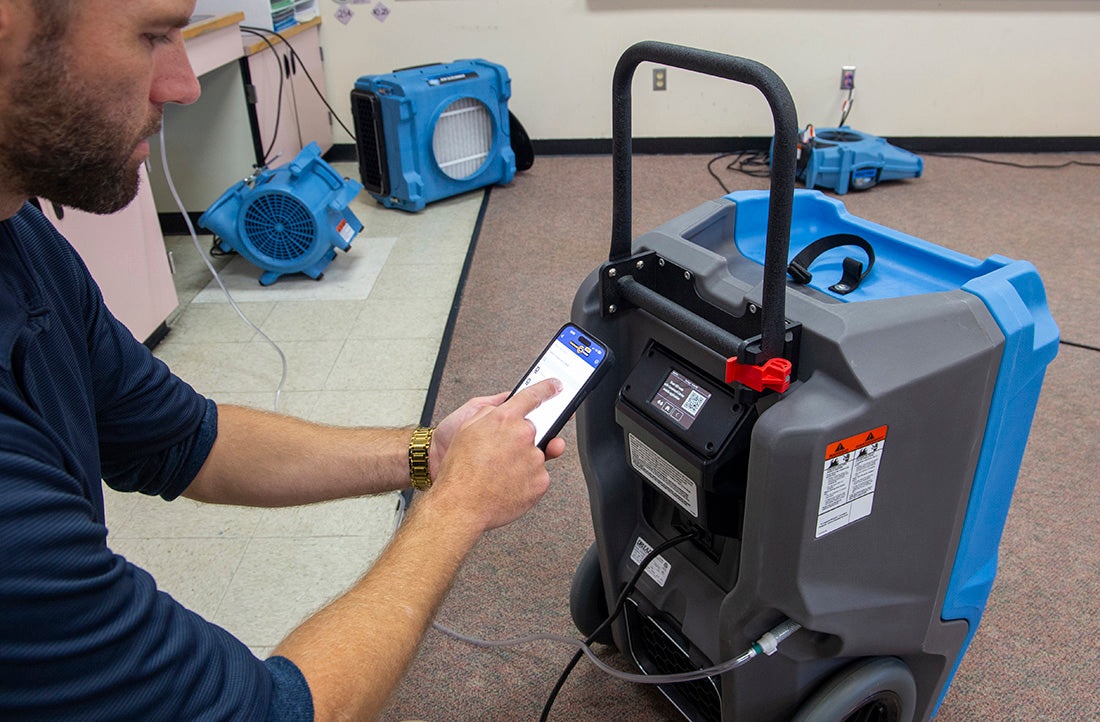Pat Muller, Ready 2 Respond Trainer
Each water damage event provides valuable lessons that can improve readiness and streamline response strategies. Facilities can identify vulnerabilities and improve remediation procedures by thoroughly documenting the process, monitoring progress, and conducting a careful analysis. These steps will help mitigate risk and minimize damage when future incidents occur.
Documentation
Water damage response is often chaotic – stressed occupants scramble to act immediately to protect belongings and stop the flooding. Amid this whirlwind, it can be easy for first responders to overlook one crucial step – documentation.
Taking photos, moisture readings, and notes of the affected area is essential. This not only helps assess the full extent of the damage but also provides valuable evidence for insurance claims and internal records. Documentation also helps when flooding is resolved and spaces must be returned to their original setup.
Tips for proper documentation:
- Gather photos of the water source, overall affected area, and specific damage to building materials and contents
- Take moisture readings in all areas to accurately track progress and ensure that a dry standard is reached
- Record placement of equipment – airmovers, dehumidifiers, and air filtration units – and any equipment changes or movement during the process (by either first responders or occupants)
- Document that all equipment stays running by checking for breakpoints in Command Hub control panel charts on Dri-Eaz dehumidifiers and air scrubbers or the Command Center Pro mobile app – this is crucial for assessing any drying delays and post-project evaluation.
- Detail observations, such as changes in odors or air quality, and any challenges with drying specific materials or areas
- Include the date and time on all moisture readings, notes, and photos
- Re-evaluate each day until drying is complete and the space is back to a pre-loss condition
Analysis
The final part of response planning is to document that the project is done and start the process of preparing for the next water loss. Because timing is always unpredictable, it’s vital to do this ASAP.
Conduct a thorough evaluation of what maintenance needs to be done, what could be improved upon, and what supplies are required. For example:
- Is all equipment fully operational, including ducting, PPE, and other accessories?
- Was equipment located in places that are readily and easily accessible?
- What were the gaps in first responder staffing, training, and internal communication processes?
- Were written standard operating procedures readily accessible, including step-by-step actions and contractor information (if needed)?
- What was the timeline for response, drying, and reaching a dry standard?
- At the end of the project, were dehumidifier and air scrubber filters checked for readiness for the next project?
Analyzing both the strengths and gaps in a facility's response is crucial to improving preparedness for future events. By identifying these areas, institutions can develop a more systematic and effective approach, ensuring consistent response for future incidents and improved results.
The R2R program is available to help with facility assessments as well as customized team training programs. Please contact us for more information.


Share:
Guide to Floodwater Safety: When Is It Okay to Handle In-House?
Be Prepared: The Role of SOPs in Emergency Response